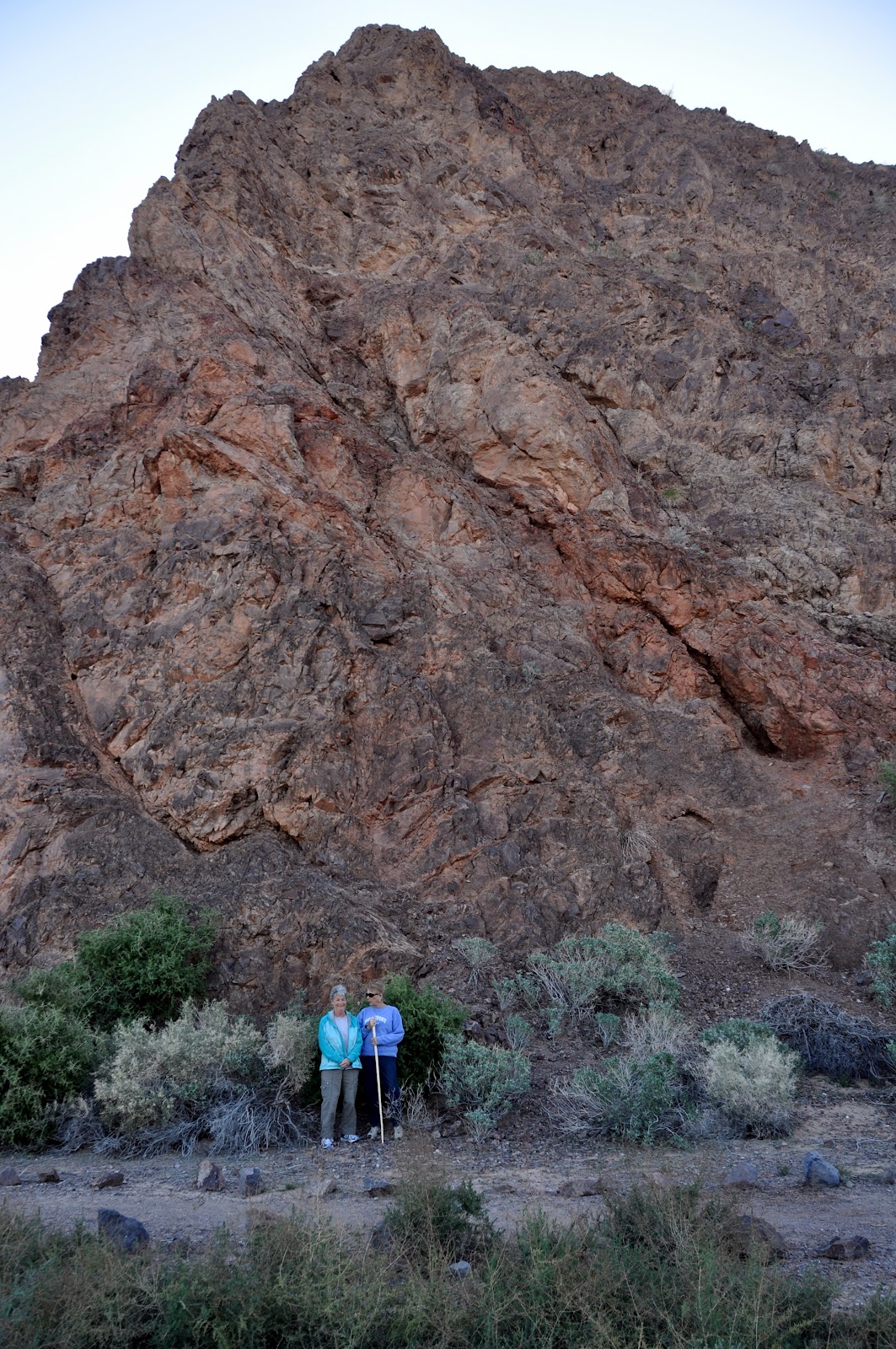Thursday, Feb 28
Bill starts working on getting his slide repaired early today. It ends up that they have to go to an RV repair center near Barstow.
After they leave, Clara and I take a ride through Joshua Tree National Park.
As with all National Parks, this one is special. It seems that no matter what the geography around the parks, there is always something spectacular and different in the parks. This one doesn't disappoint.
For Evan and Anna: Joshua Tree National Park is a transition zone between two great deserts, the Mojave and Colorado. Deserts don't have firm boundaries, and much of this park is in the overlap between these two.
The Colorado Desert covers the eastern half of the park, below 3,000 feet. This habitat of the lower Colorado River valley is part of the much larger Sonoran Desert, which spans southern Arizona and northwestern Mexico.
The western half of the park at elevations above 3,000 feet, is Mojave Desert habitat. Amid the boulder stacks are pinyon pines, junipers, scrub oaks, Mojave yuccas, and Mojave prickly pear cacti.
What tells you that you are truly in the Mojave Desert is the wild-armed Joshua Tree. It isn't really a tree but a species of yucca. Like other desert plants, its waxy, spiny leaf exposes little surface area, efficiently conserving moisture. Joshua trees can grow over 40 feet tall - at the leisurely rate of an inch a year.
There are huge mountains of rocks in the western half of the park. The rock piles began underground eons ago as a result of volcanic activity.
Magna - in this case a molten form of the rock called monzogranite - rose from deep within the Earth. As it rose, it intruded the overlying rock, the Pinto gneiss formation. As the granite cooled and crystallized underground, cracks (joints) formed horizontally and vertically.
The granite continued to uplift, where it came in contact with groundwater. Chemical weathering caused by groundwater worked on the angular granite blocks, widening cracks and rounding edges. Eventually the surface soil eroded leaving heaps of monzogranite scattered across the lands like careless piles of toy blocks.
This afternoon I had the opportunity to swim in the base pool, which is Olympic size. Only 16 laps to a mile, versus our pool at home (and most pools) are 36 laps (or 32 laps in some) per mile. It was a new, nice experience not having to make turns so often, but the laps were certainly long.
After they leave, Clara and I take a ride through Joshua Tree National Park.
As with all National Parks, this one is special. It seems that no matter what the geography around the parks, there is always something spectacular and different in the parks. This one doesn't disappoint.
 |
| While getting ready for this picture, Clara got pricked by a cactus and it was very painful. |
 |
| Huge mountains of boulders are scattered everywhere. |
 |
| Joshua trees with snow capped mountains in the distance |
 |
| Evan, can you find the two men on this rock? |
The Colorado Desert covers the eastern half of the park, below 3,000 feet. This habitat of the lower Colorado River valley is part of the much larger Sonoran Desert, which spans southern Arizona and northwestern Mexico.
The western half of the park at elevations above 3,000 feet, is Mojave Desert habitat. Amid the boulder stacks are pinyon pines, junipers, scrub oaks, Mojave yuccas, and Mojave prickly pear cacti.
What tells you that you are truly in the Mojave Desert is the wild-armed Joshua Tree. It isn't really a tree but a species of yucca. Like other desert plants, its waxy, spiny leaf exposes little surface area, efficiently conserving moisture. Joshua trees can grow over 40 feet tall - at the leisurely rate of an inch a year.
There are huge mountains of rocks in the western half of the park. The rock piles began underground eons ago as a result of volcanic activity.
Magna - in this case a molten form of the rock called monzogranite - rose from deep within the Earth. As it rose, it intruded the overlying rock, the Pinto gneiss formation. As the granite cooled and crystallized underground, cracks (joints) formed horizontally and vertically.
The granite continued to uplift, where it came in contact with groundwater. Chemical weathering caused by groundwater worked on the angular granite blocks, widening cracks and rounding edges. Eventually the surface soil eroded leaving heaps of monzogranite scattered across the lands like careless piles of toy blocks.
This afternoon I had the opportunity to swim in the base pool, which is Olympic size. Only 16 laps to a mile, versus our pool at home (and most pools) are 36 laps (or 32 laps in some) per mile. It was a new, nice experience not having to make turns so often, but the laps were certainly long.








































